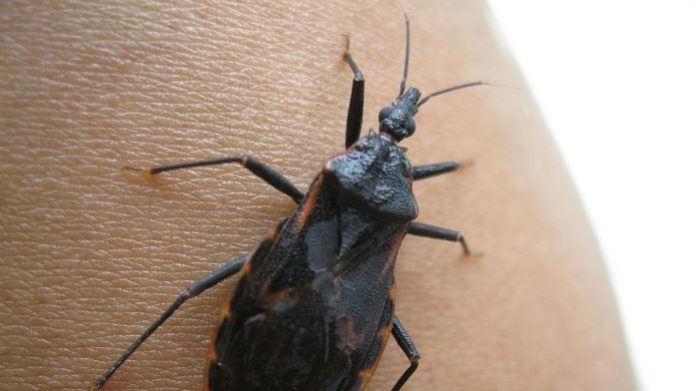Although the “kissing bug”, Rhodnius prolixus, has an interesting nickname, it’s what’s inside its head that has researchers most excited. An international team, including researchers from the University of Saskatchewan, discovered a unique cooling system in the blood-sucking R. prolixus’ head — a discovery that could be exploited to stop the spread of the deadly Chagas disease.
Keeping it cool
Like other blood-sucking insects, the kissing bug — so called because of its preference for biting around the mouth — has to try and gulp down as much hot blood as possible before someone swats it away. This blood is often much hotter than the insect’s own body, leaving it vulnerable to potential heat shock.
In order to cope with this sudden onslaught of hot fluid, blood-sucking insects have evolved various cooling mechanisms. The common mosquito, for example, keeps a small drop of blood at the tip of its abdomen. As the blood evaporates, it cools the mosquito down, counteracting the heat of the blood it’s ingesting.
This study revealed that, unlike the mosquito, the kissing bug has a complex arrangement of ducts in its head that act as a sort of heat exchanger. As the hot human blood comes into the head through one set of ducts, another set of ducts flows cool insect blood in the opposite direction, removing the excess heat and eventually releasing it to the environment. The results were published last month in the journal eLife.
Video showing a kissing bug feeding at an artificial feeder. Although the entering blood is hot, the bug’s abdomen remains cool.
A bug X-ray
Juan Ianowski, University of Saskatchewan physiology researcher, and his PhD student Xiaojie Luan contributed to the research by obtaining high resolution images of the bug’s head using the Canadian Light Source synchrotron.
The resolution of regular light microscopy, like the kind of you might have done in high-school biology class, is limited by the wavelength of visible light (400-700 nanometers). By using the synchrotron’s X-rays, which have a shorter wavelength, you can get higher resolution images — high enough to see the details of structures within a bug’s head.
In addition to being a novel anatomical structure, this cooling system could also be the key to stopping the spread of Chagas disease, a parasitic illness mostly affecting those in South and Central America.
Kissing bugs are the main transmitters of the disease, transferring the disease-causing parasite into their victim’s blood while feeding. By interfering with their blood cooling system, we could stop kissing bugs from being able to feed on multiple humans, greatly reducing disease spread. This is especially important given that a warming climate and insecticide resistance could soon increase the kissing bug’s range.
When it comes to the kissing bug, it might really be all in its head.








































